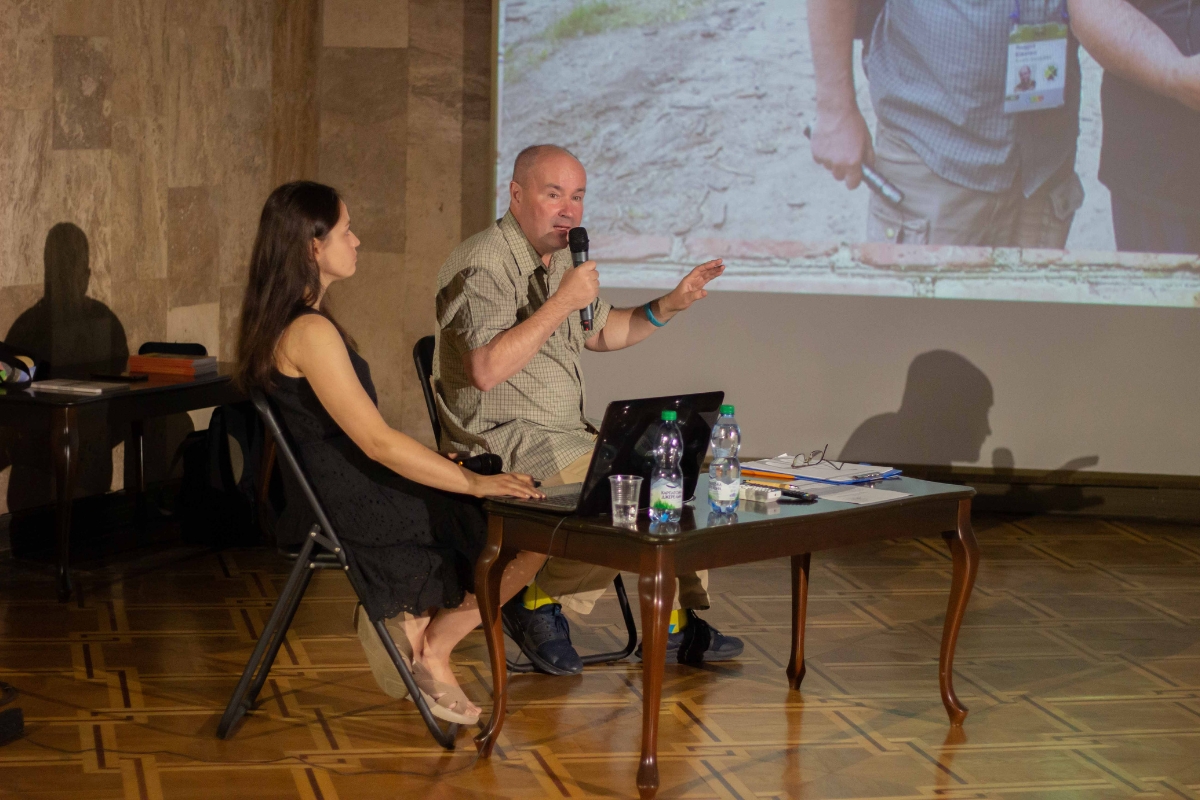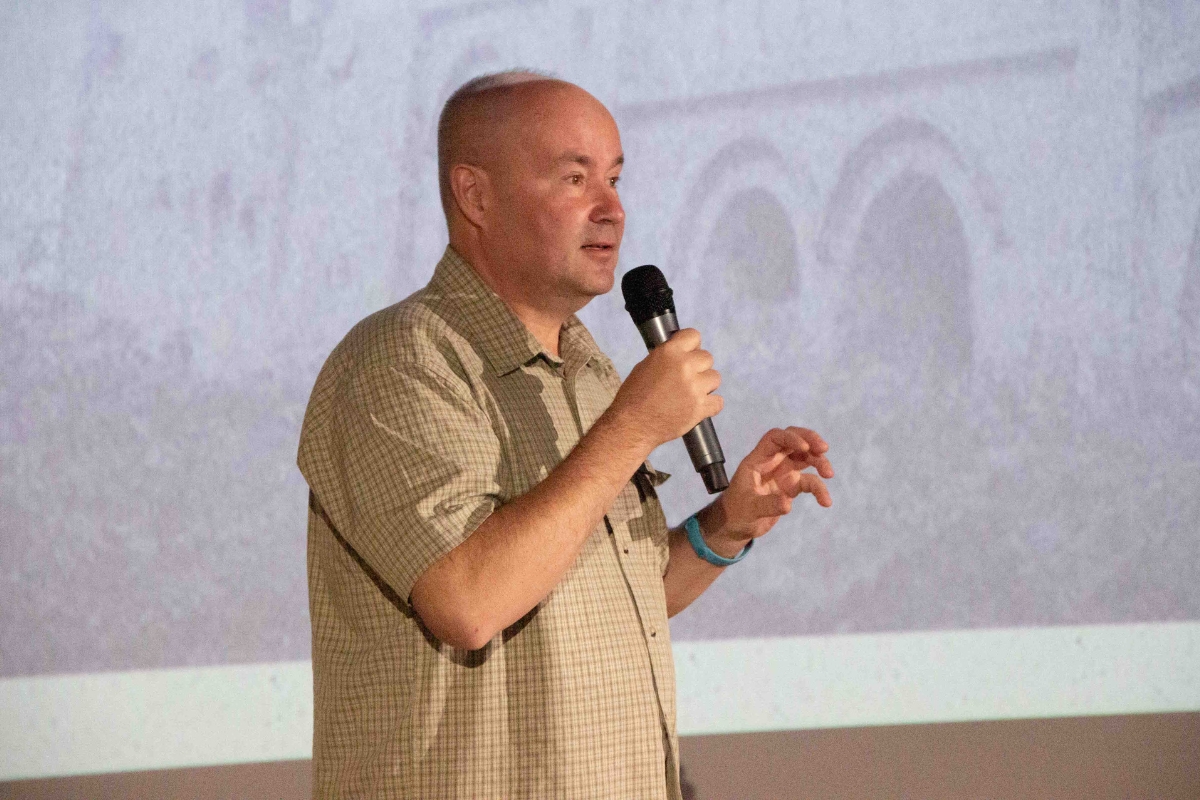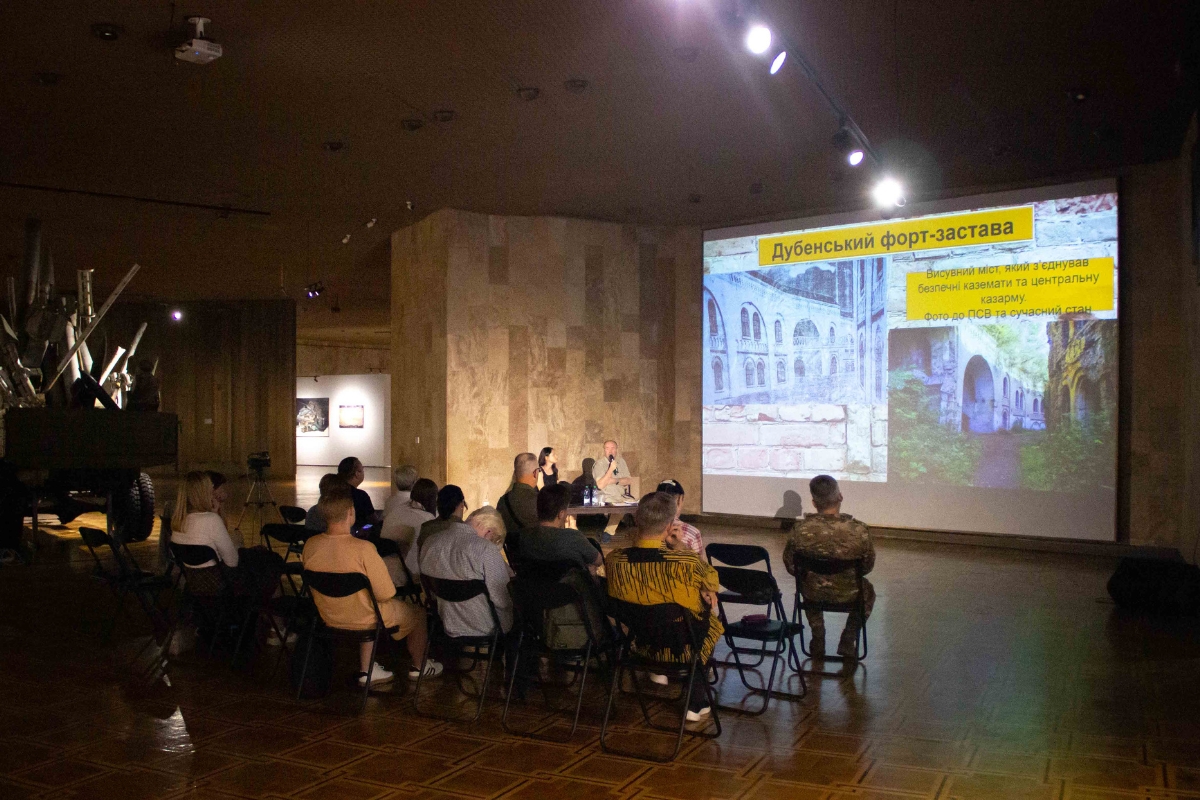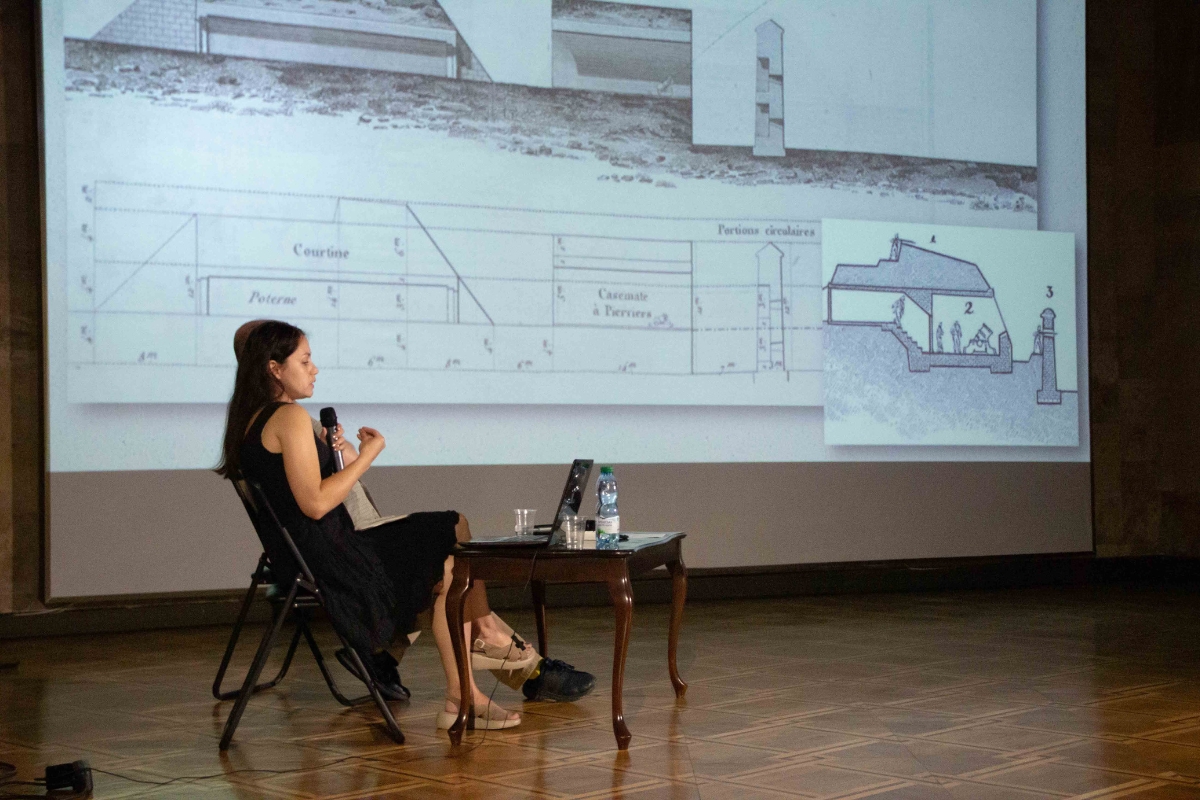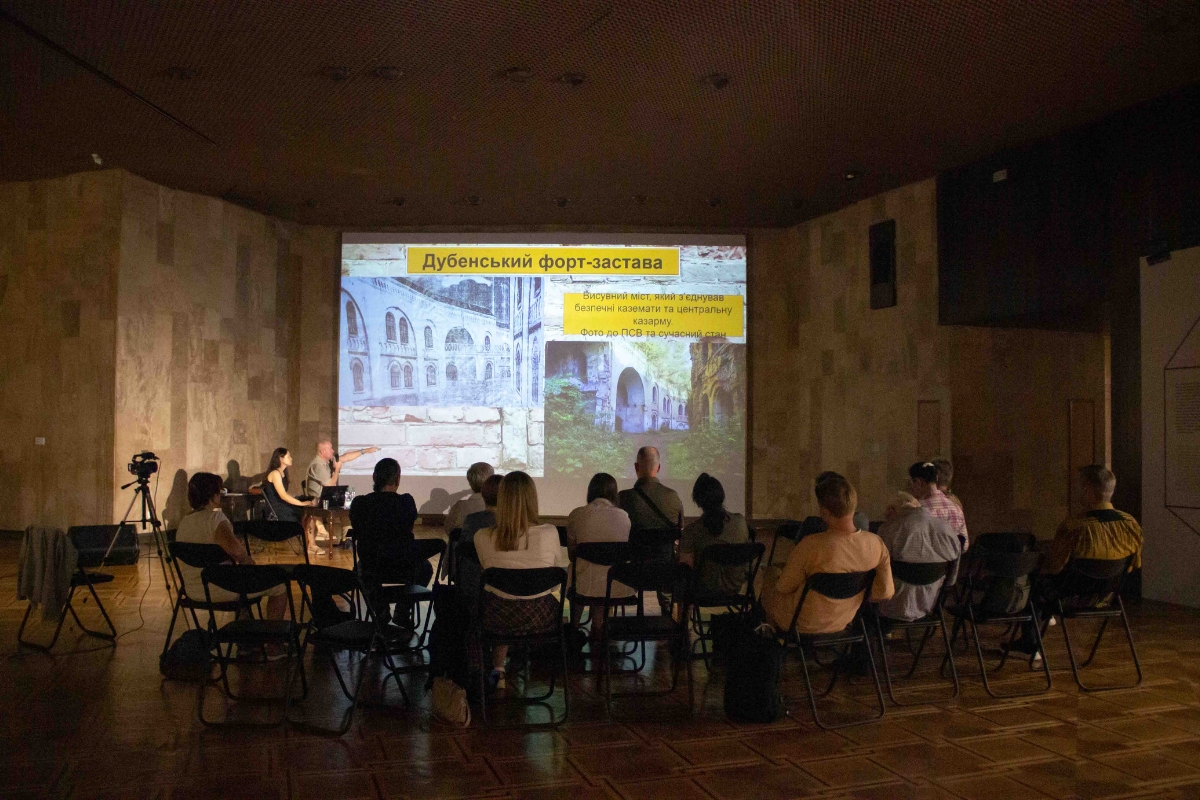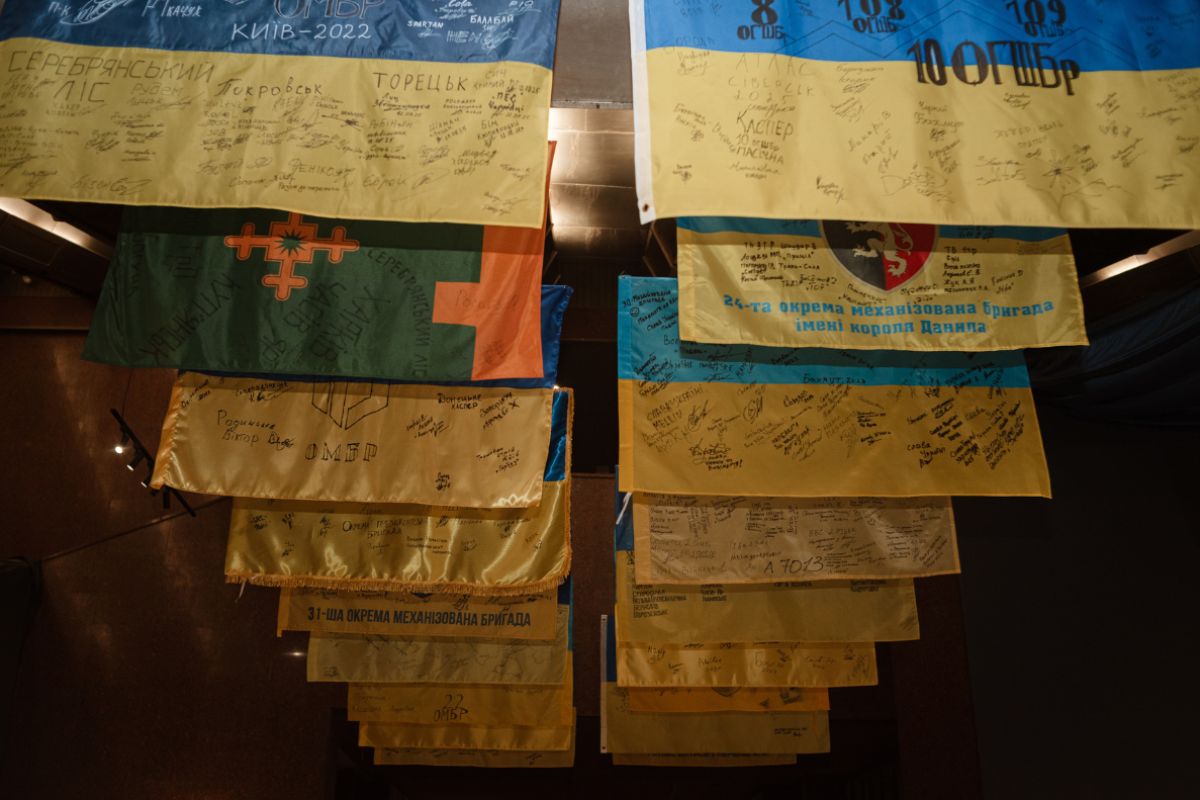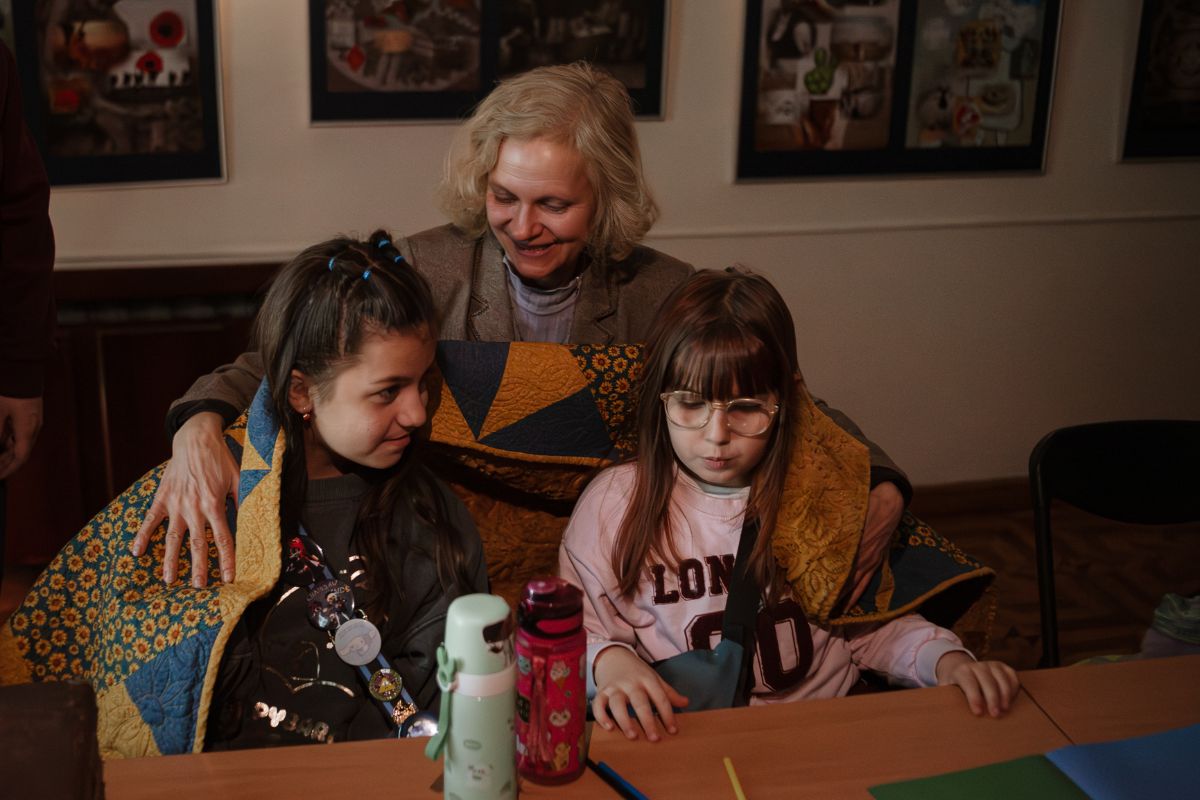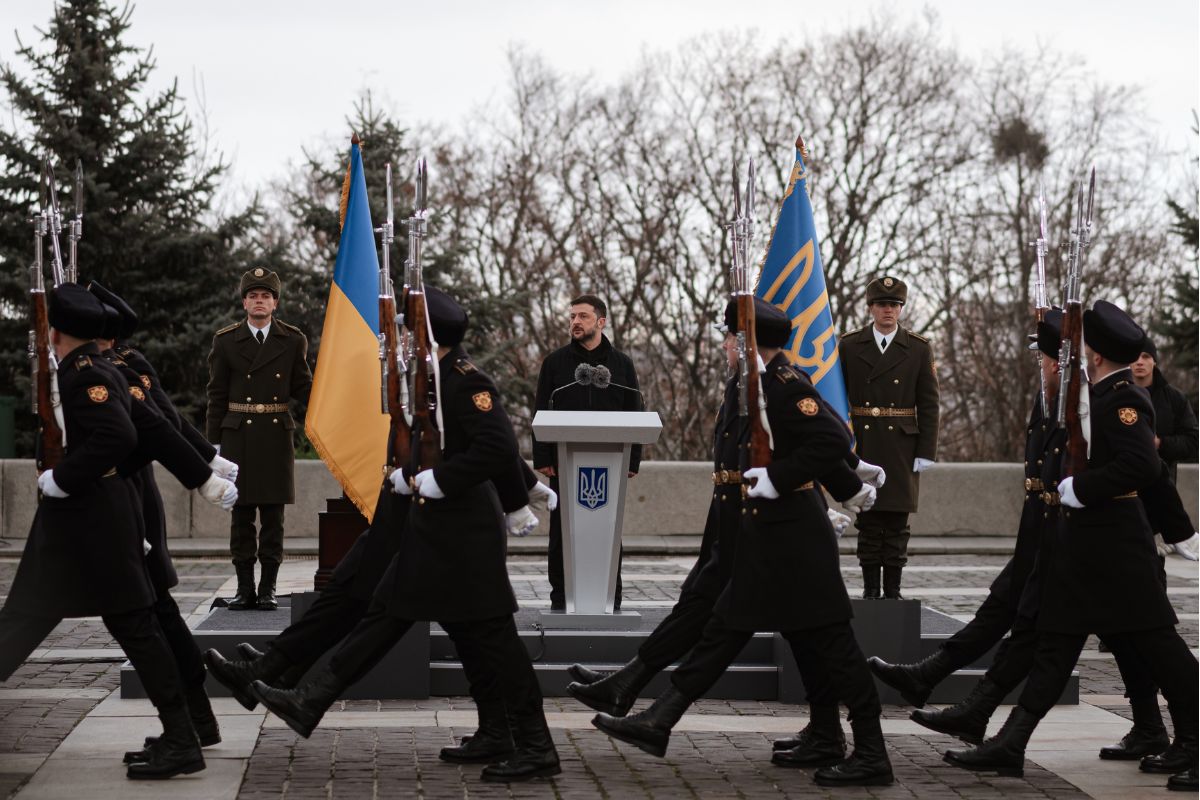On July 4, at the War Museum, renowned military historian and reenactor Andrii Shvachko held a lecture-discussion “Dubno Fort Outpost (Tarakaniv Fort): from Drawings to the Military Trials of World War I”. The event’s museum moderator was Olena Datsiuk, Senior Research Fellow of the Museum.
Andrii Shvachko – a military guide and lecturer in fortification history at Kyiv National University of Construction and Architecture – spoke about the prerequisites for creating this unique 19th-century defensive complex. According to the scholar, the strategic purpose of the Tarakaniv Fort, named after the nearby village of Tarakaniv (Dubno district, Rivne region), was to protect the railway connections of the Russian Empire on the border with Austria-Hungary in case of a possible war.
As the drawings show, the military site was built according to the latest scientific and technical trends of the time. The fort had several bridges connecting safe casemates and the central barracks. There was also a church on its grounds. Interesting facts: concrete was used for the first time during construction, and the fort’s walls were 2–3 meters thick. Its main armament consisted of six-inch (152 mm) 190-pood guns, model 1877. The main construction works were completed in 1890.
Dubno Fort underwent trials during World War I. In 1915, units of the Southwestern Russian Front withdrew from the fort almost without a fight, leaving the defensive complex to the Austrians. Part of the fort was blown up. In 1916, during the Brusilov Offensive, Russian troops drove Austrian army units out of the fortifications. In 1920, during the Polish-Soviet War, the fort was occupied by Polish soldiers, who were later ousted by the Bolsheviks. In the interwar period, the fort belonged to Poland. During World War II, no fighting took place for the Tarakaniv Fort.
In Soviet times, the defensive complex was intended for use as a storage facility for canned goods, but the plan failed. Due to excessive humidity and lack of ventilation equipment, products spoiled.
In independent Ukraine, various events have been held on the territory of Dubno Fort. In 2008, for example, a reenactment of the “Brusilov Offensive of 1916” took place. According to the speaker, many of its participants are now serving in the Armed Forces of Ukraine, defending our country from Russian invaders.
Tarakaniv Fort also attracts domestic filmmakers. Its territory was used for filming episodes of the historical drama feature “The Guide ”. Dubno Fort Outpost also became one of the main locations for shooting the knightly fantasy fairy tale “Dzhura the King’s Son ”.
Currently, according to the lecturer, the structure is in extreme neglect, “undergoing constant natural destruction and in need of investments from international partners for restoration.” There is hope that in the future it will be restored and become one of the most visited tourist destinations.
The War Museum sincerely thanks Andrii Shvachko for his engaging and informative lecture and for drawing public attention to the preservation of this unique 19th-century military architectural monument, and thanks all guests for their participation in the event.
Event recording on YouTube:
https://youtu.be/_F-PQ4u_2Zo
